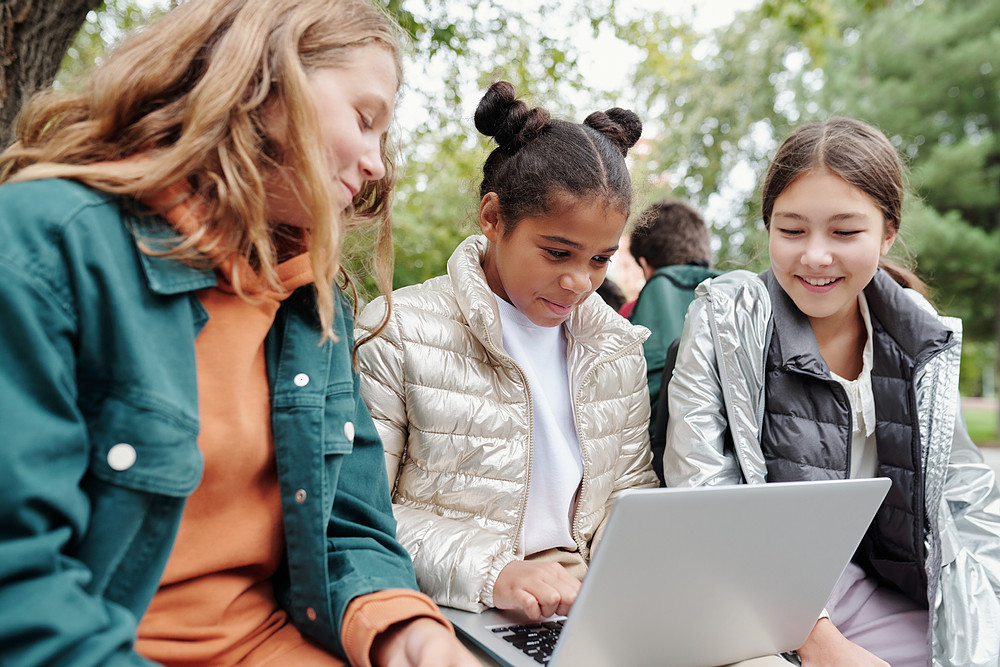
26
JulyE-learning here to stay
Electronic- or e-retail is the dominant trend in commerce, and a similar transformation is seen in education, with e-learning or remote or distance learning shaping the Philippine education landscape.
The disruption caused by the still-ongoing COVID-19 pandemic, which leaves parts of the country under lockdown or quarantine or its many variations, is hastening the evolution of a more technology-bound educational system. Brian Vincent Belen, president of Diwa Learning Systems, Inc., said, “The pandemic is the largest disruption to education. The mode of delivery [of lessons] has changed from face-to-face sessions to remote meetings. Many schools did not have much time to prepare.”
There were some successes in the instant shift, he said, but these were schools that were already easing their way into a more technology-rich system before the pandemic.
Belen was one of the panelists at a recent Inquirer Project Rebound webinar that revolved on the theme “Empowering Minds, Bridging Gaps: Learning Institutions Adapt to the New Normal” moderated by the Inquirer’s Ruel de Vera and Dax Lucas. Dr. Cynthia Bautista, vice president for academic affairs of the University of the Philippines (UP) system, said Philippine education was “in a state of transition.” The crisis called for a paradigm shift. From the usual teacher-centered face-to-face classes, educators had to shift to e-learning, which is the future of education. Cathy Yap-Yang, first vice president and head of corporate communications for the Philippine Long Distance Company Inc. (PLDT) and Smart Communications, said technology introduction and adoption had to be fast-tracked to cope with the crisis.“As a telecommunication company, PLDT had to provide the technology and other tools and services. It conducted technology training for teachers, students, parents, etc.,” Yang said.Diane Fajardo of the Philippine Business for Education, who has years of involvement in the country’s educational system, said, “The [education] problem had actually existed for decades but worsened during the pandemic. The crisis showed what the country should prepare for. They now know what needs to be done.”Belen said schools’ different stages of development influenced their ability to cope with the unexpected disruption. “But everybody now has an idea of what works and what doesn’t. [They can now] move forward with those that do.”But he pointed out that some problems were beyond the schools’ capabilities, like the physical and digital infrastructure to shift to e-learning. He stressed, however, that “we shouldn’t be restrained by the idea that some [schools] will necessarily be left behind.”
Bautista, who noted that every organization was caught off-guard in the beginning, said the systemic issue was internet connectivity. “The government must help since students are [spread all over the country]. Not even all UP units have fully adjusted [to the new setup].”
The challenge for schools, Yang said, was access to device and the cost of connectivity. “PLDT had developed platforms to respond to problems. These include strengthening connectivity at the barangay level, providing mobile applications suitable for distance learning and free access to certain education portals, such as the Department of Education’s.
Fajardo pointed out, however, that the burden for ensuring connectivity had shifted to households, with restrictions on physical classes still in effect. Lack of face-to-face interactions was also particularly difficult for technical-vocational schools that needed to conduct hands-on training and physical assessment of learned and acquired skills.Bautista called attention to the students’ mental health as social interactions were limited. Already a felt problem before, COVID-19, she said, made the problem worse.Fajardo mentioned that unemployment was a bigger problem in private schools where teachers had no security of tenure, compared to their counterparts in the public education system. She said the government could probably expand its voucher program, which helped students pay for the higher fees in private schools, to help private schools pay teachers’ salaries.
She also raised the possibility of increasing employment by hiring education graduates as teacher aides to help educators cope with large classes, especially now when mentoring is limited to small groups at a time.
As the country inexorably moves towards more technology-based system, whether it is blended or full remote learning, Bautista said the goal should be to develop independent, creative learners. There should be “complementarity” between public and private schools.
Face-to-face learning could possibly resume by the second semester of the current school year, but Bautista said blended, or even distance, learning would continue.
Belen said schools should start planning, amid COVID-19 disruptions, for the eventual return of students to school.
Fajardo said decisions on when and how to reopen schools could probably be delegated to local government officials who know first-hand the situation in their respective communities. Yang, meanwhile, said: “Online learning is here to stay (so PLDT) is innovating to meet the needs (of the new system), whether hybrid or full on-line.”
“Technology enhanced/mediated education will be part of our lives,” Bautista added. Noting that adoption of new, more technology-rich management systems was slow before Covid-19, she said, “What is important is a change of mindset.”
Learner engagement, she said, should be paramount in adopting new modes and systems. “Our world will always be disrupted so people have to be trained to cope with all this.”
Source= Inquirer.net

Reviews